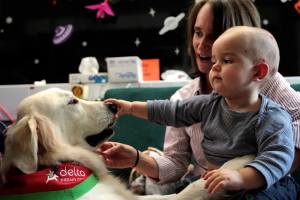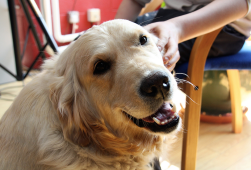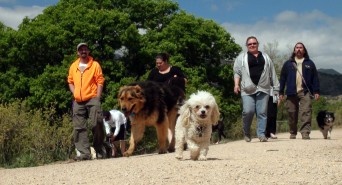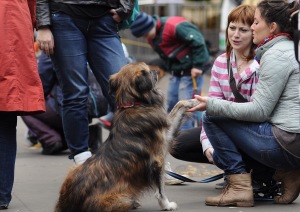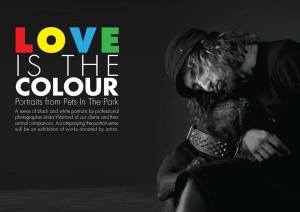What are the benefits of letting pets accompany their owners in refuges and shelters? Patrick Caruana shares his personal experiences in the sector, seeing the many and varied benefits of animal companionship.

Guest author Patrick Caruana has a passion for social justice and housing and has been working in the sector for many years to help people change their lives for the better. He currently works at GCJ Sessional Management Services to help businesses reach their potential in a dynamic environment.
I have seen the benefits first-hand of providing accommodation for pets of the homeless in shelters and refuges.
As a landlord, I provided my tenant a property with two kennels, secure gates and fences for her two dogs. When she came to view the house and saw the facilities for her dogs I saw her visibly relax. She had separated from her husband, who had threatened to destroy the dogs if they were left behind. She had been unsuccessful in securing housing because she had four girls and the two dogs. She has lived in the house and made it a home for the past five years.
I managed a retirement living and aged care facility in rural Victoria in the early 2000s. All the Independent Living Residents were encouraged to have pets. Those that did were encouraged to take their pets when visiting the Residential Care Facility to see friends or family. The joy on the faces of both residents and staff was really special. The staff were also encouraged to bring their dogs in to the residential care facility. The Director of Nursing and the two Division 1 nurses used to bring in their golden retrievers daily. From the moment they walked through the doors they would be off lead and free to wander the facility. They could sense the impending passing of a resident and would go and sit in their room with them.
Having the dogs there was so successful that we actually turned a glassed-off internal courtyard into a mini zoo. The local vets advised us and we put together a menagerie of birds, different reptiles, possums and a small pond. The animals were not natural predators of each other and we made sure they were always well fed. Residents often watched the animals around the glass. It was a really calming feature.
I moved on from that organisation and began working for a youth support agency, which had a crisis refuge for young people up to the age of 21. Again, all staff were encouraged to bring their dogs in when they came to work. The really amazing thing is that the dogs seemed to sense which of the young people were really vulnerable and approach and nuzzled them until they got a response. The dogs stayed by the side of the young person until they sensed that they were calm. They wandered freely through the house. If a group of young people stayed for a week, the dogs would rotate and spend one night with each young person. They did this intuitively without any input from the staff. Those who called the service were asked if they had a pet and were invited to bring them
The amazing thing is that the dogs seem to understand that the refuge was a place of high stress and tension and they didn’t get aggressive with each other at all. They sensed that peace and calm was what was needed, and they provided that.
I, myself, have two kelpies and could not consider a life without them. When I’m down or worried and when I’m happy, they sense that and provide fun and extroverted companionship.
In 2014, the recognition that pet therapy is integral to also assisting those with mental health issues, along with the anecdotal evidence that I presented, should go some way to establish and confirm the benefits of allowing pets to accompany their owners into homeless refuges. Perhaps the refuges could form partnerships and collaborate with animal shelters. That way, the shelters can provide the homeless centres with either pet food packages or through larger economies of scale purchasing partnerships to provide the homeless centres with cheaper pet foods.
From my experience and perspective, there are no significant negative impacts in allowing the homeless to bring their pets into the centres and providing pet accommodation. The only impediment to instituting initial change is in our minds. Once we are prepared to step outside the accepted thought lines, anything is possible.
